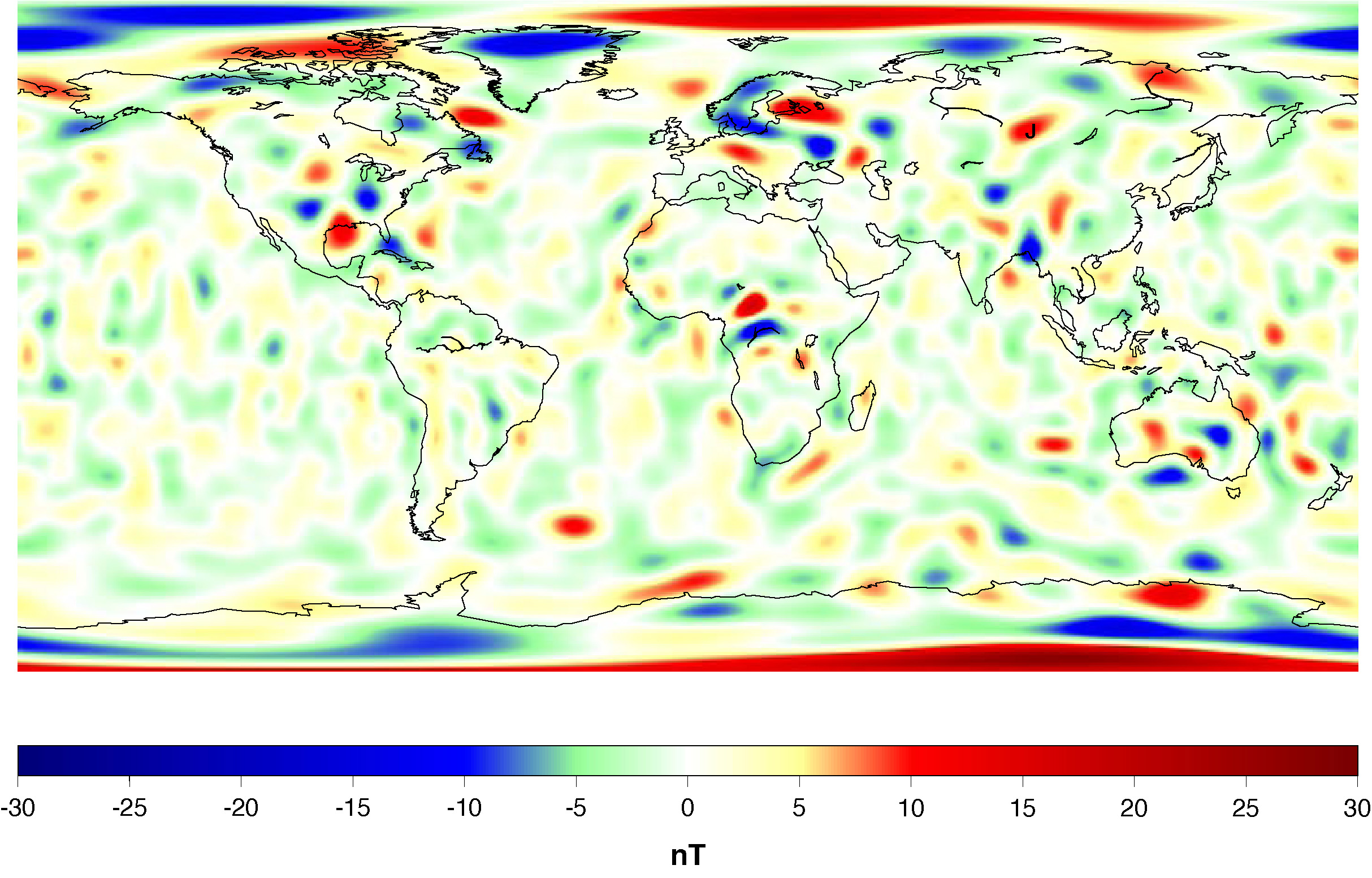Magnets are probably the coolest “everyday” object you are introduced to as a child, and they don’t get any less awesome when you learn they can generate electricity, and magnetism and electricity are both components of a single electromagnetic force.
Every macro object, from actual magnets to Danny DeVito, is a little magnetic thanks to the spin of their electrons generating magnetic dipole moments, like teeny tiny magnets. In most materials these spins are not aligned and cancel each other out, leaving you with little net magnetic charge. But in magnetic materials they can align in the same direction and the result is a magnet, with a magnetic field and north and south poles.
Earth has its own magnetic field, powered by geodynamic processes in the outer core, and the movement of molten iron and nickel.
“The parameters describing the direction of the magnetic field are declination (D) and inclination (I). D and I are measured in units of degrees, positive east for D and positive down for I. The intensity of the total field (F) is described by the horizontal component (H), vertical component (Z), and the north (X) and east (Y) components of the horizontal intensity,” the National Oceanic and Atmospheric Administration (NOAA) explains.
“These components may be measured in units of gauss but are generally reported in nanoTesla (1nT * 100,000 = 1 gauss). Earth’s magnetic field intensity is roughly between 25,000 – 65,000 nT (.25 – .65 gauss).”
At the surface, the magnetic field strength varies, but is always around 0.25–0.65 gauss. It may look dramatic in magnetic field maps (seen below) but we are talking tiny numbers.
“The units provided here are in nanoTesla. A Tesla is a unit indicating the number of magnetic field lines per square meter. So a nanoTesla would be that same value, divided by one billion,” NASA explains. “To put that unit into perspective, a typical refrigerator magnet is about 200 times stronger than the strongest magnetic forces represented on this map.”

NASA’s Earth Surface Magnetism map, showing variations in magnetic field strength.
Closer to the core, the magnetic field strength increases. It is a little more difficult to pin down figures here, given how far we are away from the core, but estimates suggest it increases to around 2.5 mT, or 25 gauss, up to a hundred times the strength seen at the surface.
So, where is the strongest magnetic field on Earth? In a lab, of course. We have found naturally magnetized rocks, but our strongest magnets are ones that we have taken the trouble to make.
The strongest magnetic fields on Earth that we can currently produce are courtesy of MagLab in Tallahassee, Florida, at their pulsed field facility.
“The magnet produces a whopping 100 tesla,” MagLab explains of the magnet, which must be cooled to -198.15 degrees Celsius (-324.67 degrees Fahrenheit) in order to stop the pulse of electricity from its power source from overheating it.
“This magnet is powered by four separate electrical circuits. Three circuits comprise the large 100 tesla outsert magnet, which is powered by a 1.4 gigawatt generator (a gigawatt is equal to 1,000 megawatts). The insert circuit is powered by a 2 megajoule capacitor bank. The present peak field is 37 tesla for the outsert and 53 tesla for the insert. When the system reaches 100 tesla, the outsert magnet will generate 40 to 44 tesla and the insert will generate between 55 to 60 tesla.”
For context, a typical junkyard magnet used to pick up cars is around 1 tesla, so that’s a pretty strong magnet. In fact, with a little caveat, it is the strongest magnet in the world. So what’s the caveat?
“There are higher-field magnets out there,” MagLab explains. “[T]he problem is, they explode directly after the very brief experiments they are used for because they are not strong enough to withstand the forces created by such a powerful magnetic field.”
In 2018, for example, scientists created the strongest ever indoor magnetic field, and watched their equipment explode.
That experiment produced 1,200 teslas, but it still wasn’t the most powerful magnetic field ever created. That title goes to an experiment in 2001, when physicists in Russia produced 2,800 tesla, blowing up their equipment in the process. Why produce such large magnetic fields?
“With magnetic fields above 1,000 Teslas, you open up some interesting possibilities,” UTokyo physicist Shojiro Takeyama explained in a 2018 statement. “You can observe the motion of electrons outside the material environments they are normally within. So we can study them in a whole new light and explore new kinds of electronic devices. This research could also be useful to those working on fusion power generation.”
Plus, you know, magnets are really cool.
Source Link: The Strongest Magnetic Field On Earth Is Located In The US. It Measures 1,000,000 Gauss